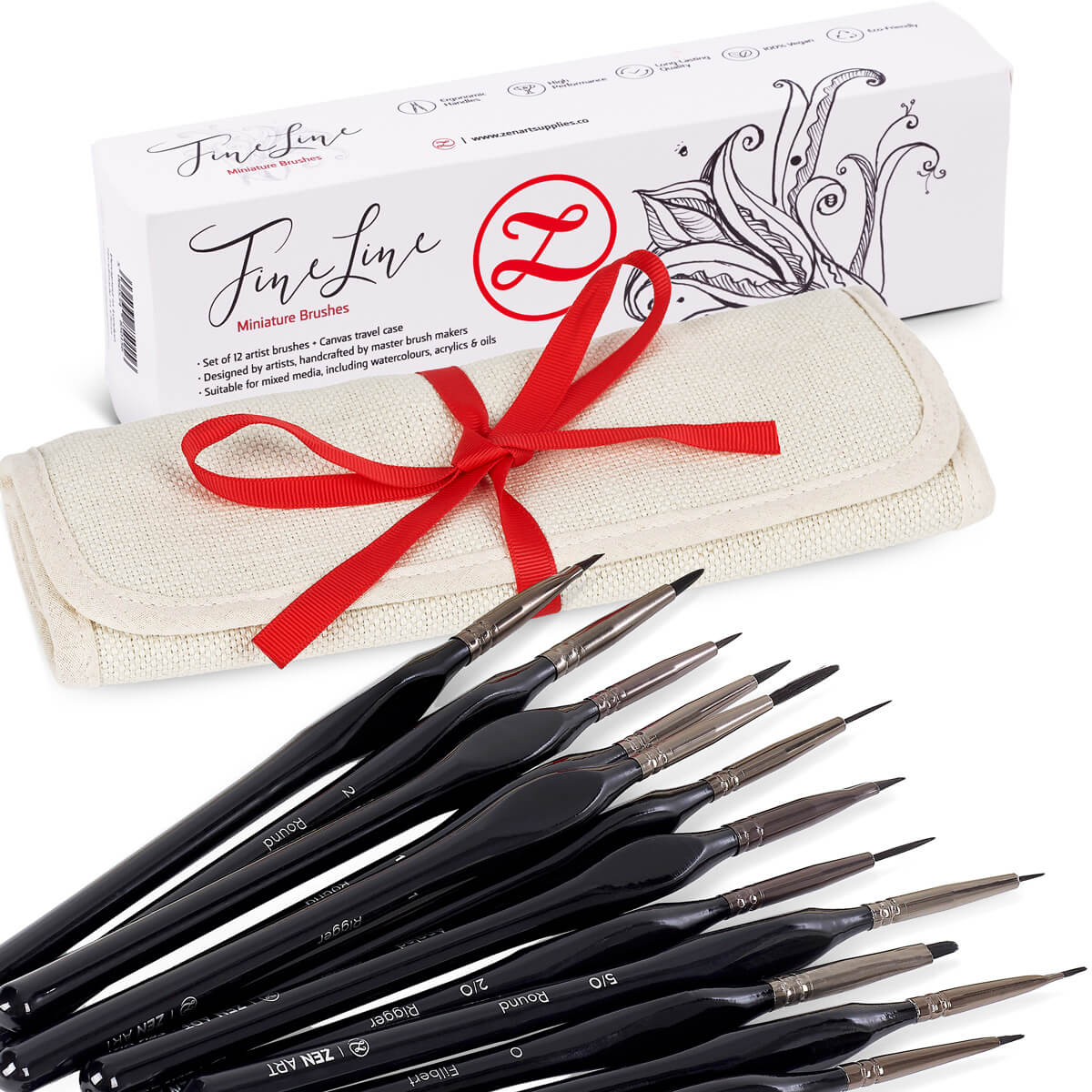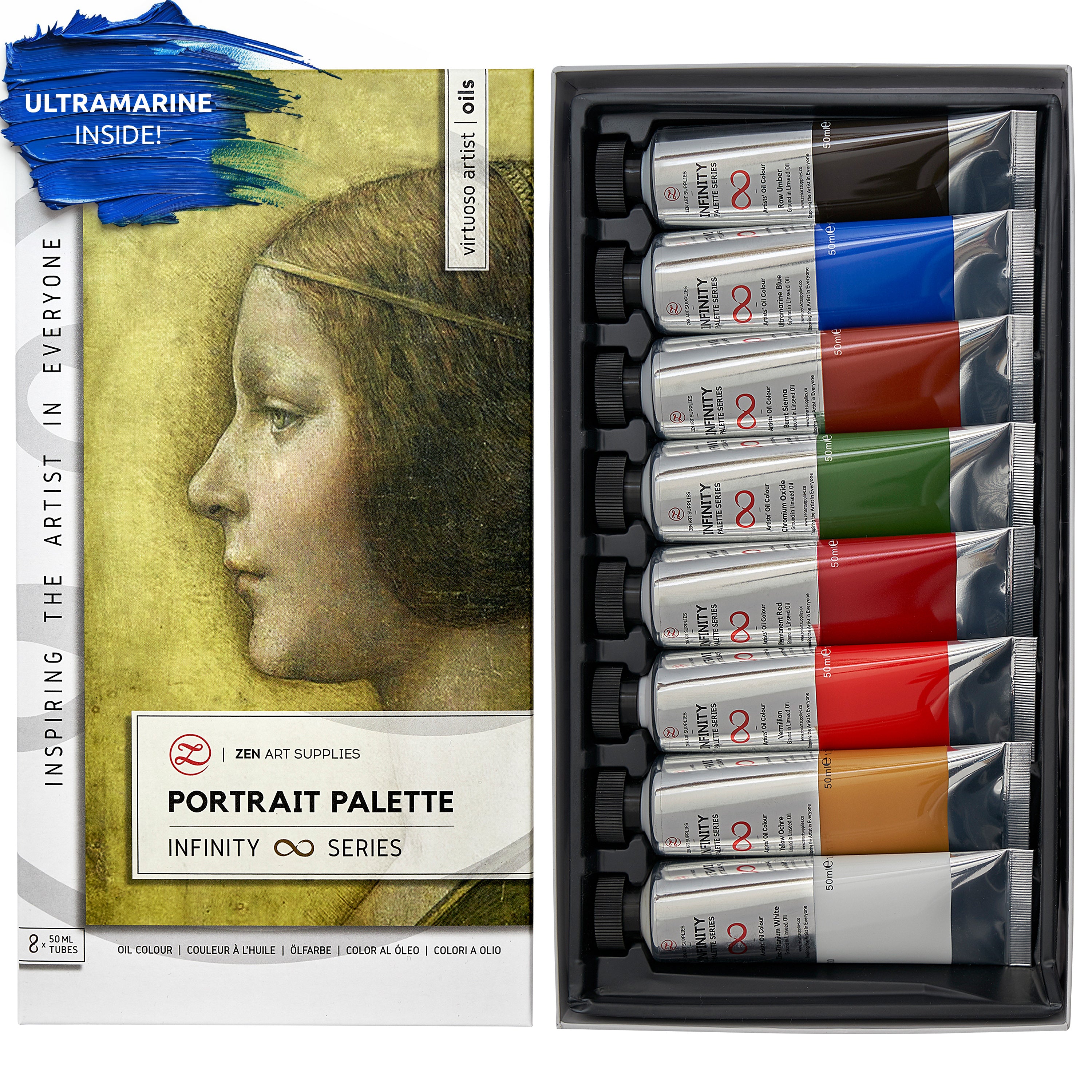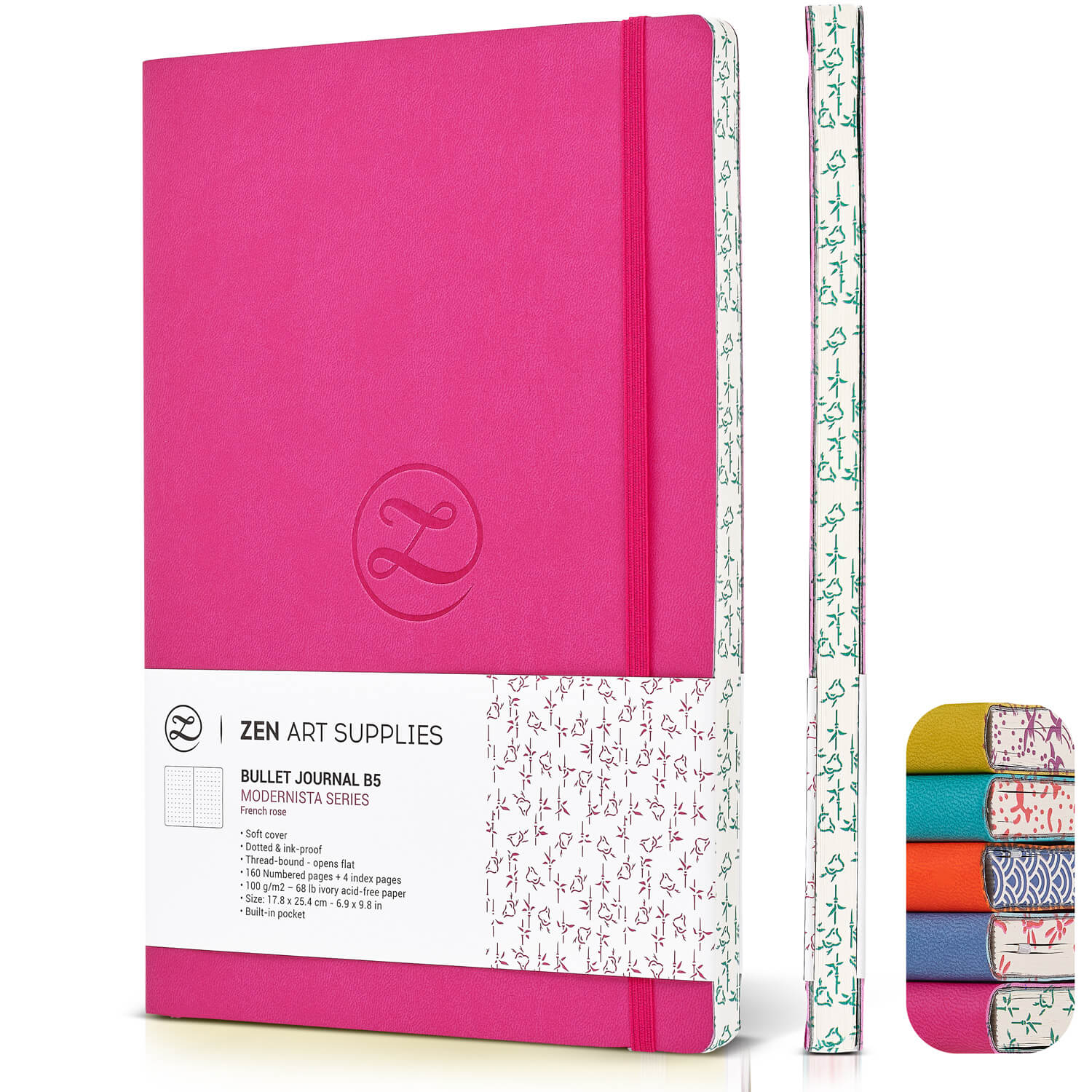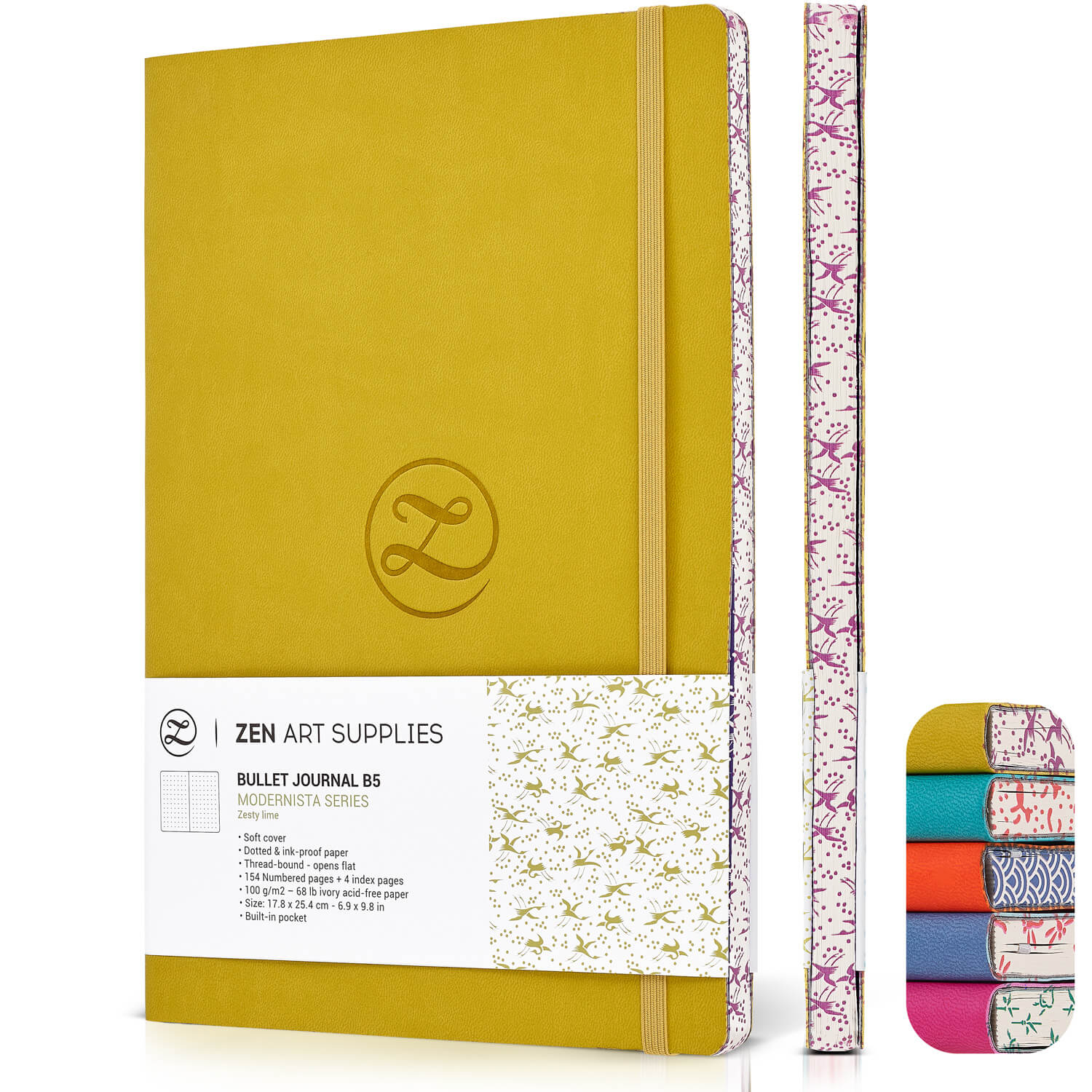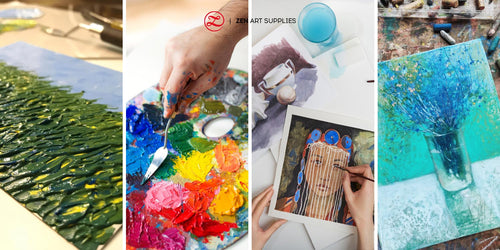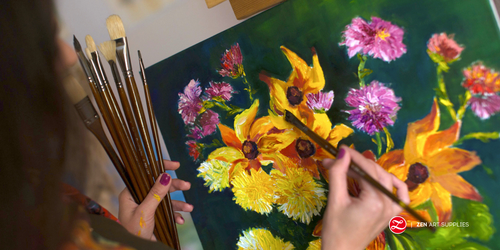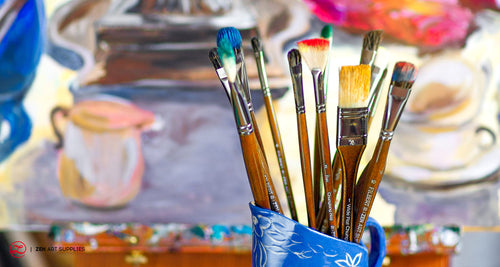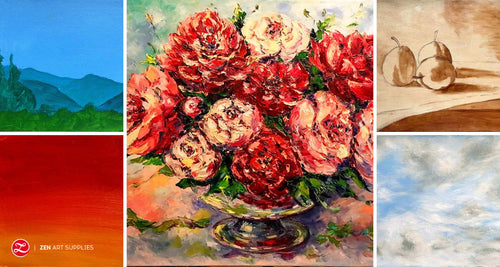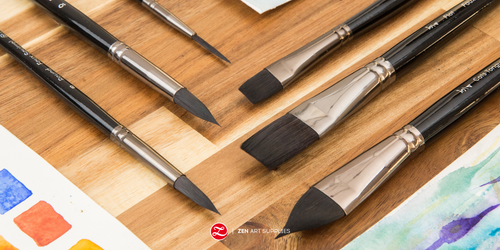The best way to learn about the world is to explore it. And the best way to explore the world is to slow down and appreciate your surroundings. One way to do this is by travel sketching.
Sure, taking photos and videos is quicker. But a travel sketchbook turns your experiences into tangible, lasting memories.
When you start to sketch your environment, you appreciate the little things. Things you would’ve missed if you just snapped a pic and moved on.
Keeping a travel journal may seem daunting for a beginner or casual artist. But it’s about the process, not perfection.
Next time you plan a trip, don’t forget to bring a pen and paper. With enough practice, your art and worldview will evolve. Here are some tips and ideas to get into travel sketching!
What is travel sketching?
Simply put, travel sketching is the art of capturing a place through pen and paper. It’s a form of urban or nature sketching since it involves drawing on location. You can sketch anything you find on your trip: interesting buildings, verdant landscapes, lively crowds.
Through travel sketching, you hone your observation skills and see things from a new perspective. A travel sketch isn’t meant to be accurate. Just live in the moment and interpret what you see.
This type of sketching isn’t new. Many artists like Pablo Picasso, Georgia O’Keefe, Gustav Klimt, and Vincent Van Gogh were also travelers who used art to document places they’ve visited.
Upon the invention of the camera and the rise of social media, however, the travel sketchbook became a bit of a relic. Still, there are journal-keepers today who keep the art of travel sketching alive.
What do I need to start travel sketching?

Pro-tip: Travel light. Only carry what you can. Be practical. Keep your art supplies relevant, multipurpose, and travel-friendly.
Don’t take your whole studio on a four-day trip. Bring what you can easily stash away in your bag.
If you’re flying, don’t bother bringing oil paints and aerosols. Liquid paints should remain at home, or in your check-in baggage if in small tubes. But trust me, you’re better off with markers and watercolors. Less mess.
Here’s what I usually carry in my travel sketching kit.
Mechanical pencil and eraser
You can’t start a sketch without a pencil and pen. To keep things light and to avoid the mess of sharpening them, I opt for mechanical, retractable pencils.
I also like retractable erasers as they’re easy to carry and harder to lose than a regular or kneaded eraser. Still, you do you.
Drawing pens
I bring a few archival ink drawing pens for outlining my sketches and writing in my travel journals. You can also use a brush pen for lettering.
Usually, I bring drawing pens in sizes 0.5, 0.3, and 0.1.
Bring pens that are waterproof and fade-resistant. They don’t smudge or bleed when you start coloring in your sketches.
Travel brushes
To keep things neat and practical, get a set of brushes made for traveling. Grab a water brush—featured in our Sereno, Allegro, and Prezioso palettes—which stores water in the handle. Or you get our set of four expandable watercolor brushes, which come in a handy leather case.
An artist’s sketchbook

Some traveling artists like to draw on large surfaces. Others prefer small sketchbooks. You do you, just make sure everything fits in your bag!
Recently I’ve found that a B6 sketchbook is my perfect size. It’s smaller than the A5 sketchbooks I’m used to but not as restrictive as an A6. We have a B6-sized sketchbook here on Zen Art Supplies that I never leave home without. You never know when inspiration will strike.
Designed for art-making on the go, this high-quality journal lays 180° flat. Its acid-free 120gsm pages can withstand ink and watercolor. The recycled leather cover is water-resistant and scratch-proof, with an elastic band to protect your drawings against the elements.
Travel-friendly watercolor palettes
Palettes with dry pans of watercolor are part of my travel essentials. It’s the most practical art medium to take on trips, besides colored pencils and water-based brush pens. You only need the primary colors since it’s easy to mix and blend.
Here are suggestions from our shop for watercolor palettes to pack on your next trip!
Espresso Palette: Watercolor that fits in your pocket
No luggage room for an extensive set? The Zen Art Espresso palette is the way to go. This essential palette was curated for travel, with 12 vibrant hues of primary colors. You can even use the tin cover as a mixing space.
Allegro Palette: Warm-toned watercolor travel set
Though larger than a travel-sized palette, our warm-toned Allegro palette packs a serious punch. It’s a watercolor studio on the go! With 24 premixed half-pans, you’ve got a full range of colors for outdoor scenery. The palette side has a sponge for better water control. The cover side has ample space for mixing. It also comes with a water brush and flat brush.
Virtuoso Palette: Curated professional watercolor sets
Our Virtuoso watercolor palettes are professional-grade and non-toxic. The full range features 48 colors in movable half pans so you can mix and match according to your needs. We recommend the Moderno or Classico for your primary shades. Add the Vista set so you can paint evergreen landscapes and azure seascapes.
Essential journaling accessories

These miscellaneous art accessories always come in handy for me:
A mini ruler. Mine’s made of thin aluminum, easy to store in the inside pocket of your travel journal.
Mini scissors and glue tape. For sticking mementos and paraphernalia like tickets, postcards, and polaroids. Small scissors, no more than 4 inches long, will get through airport security.
Binder clip. I hate when I’m sketching and the wind blows my pages around. So I started bringing a binder clip, attached to the cover of my travel sketchbook.
Spray bottle or collapsible water cup. For watercolor on the go. I prefer spray bottles, stashed in my bag organizer. Easier to reactivate my paints when there’s no bathroom nearby.
How do you make a travel sketch?
Drawing on location is the most authentic way to travel sketch. All you need to do to begin is find a subject, any moment or landmark that catches your eye!
Pick a spot and observe your environment
Start your sketch by very well getting lost. Walk and look around. Search for ideas in an unfamiliar environment.
Get a sense of your surroundings. What can you see, hear, smell, feel, or taste? What’s happening that interests you? Notice the little details. The people, their expressions, the colors of food, the curves and angles of a structure.
Frame your view. Find a good vantage point. And make sure you’re allowed to sit and sketch there.
Start sketching in pencil—focus on expression over perfection!
One of the techniques you learn while sketching is how to see. We tend to draw based on how we think our subject should look. That’s where frustration arises. Instead, train your brain to break things down into lines and basic shapes instead of images.
Figure out your perspective, point of action, and items of interest. Build up your sketches in layers: background, middle ground, and foreground. Then add detail.
Trust the process and don’t worry about making mistakes. Leave the photorealism to picture-taking. Just have fun and do things in your style.
You may also create thumbnail sketches before your actual drawing.
Start detailing with a waterproof pen
I like to refine my pencil drawings before finalizing the sketch with my archival ink pens. If you’re working with watercolors, use a pen with waterproof ink.
You might even decide at this point to omit some objects or details. That’s okay! You don’t have to capture everything.
Color it in
Coloring your travel sketch brings it alive. Your sketch begins to develop into a full image.
I usually do this back in the comfort of my hotel room. But a little plein air painting never hurts to exercise your creative muscles. The most practical medium for travel sketching, as I suggested, is watercolor. It’s easy to carry around and activate.
Pay attention to shadows and lighting. In a hurry? Just take reference images or note down the colors so you can go back in later. Here’s where brush pens come in handy, too.
Tips for travel sketching
Create a routine out of travel sketching when you go overseas or out of town. Free up your mornings or late afternoons to draw during the golden hour. And take your time. Unless you’ve got company, then take reference photos.
Here are some tips to make the most of your journey!
Respect the culture and rules
Art may be about breaking the rules, but that doesn’t mean you should on a trip abroad. Be mindful. Ask permission. Don’t upset the locals by disrespecting their culture and spaces.
For example, some areas like museums and landmarks don’t allow you to bring permanent writing or mark-making instruments due to the risk of vandalism. Sometimes you’ll want to sketch a curious-looking fellow, but they may not be comfortable. Keep a respectful distance from rituals and ceremonies. Some practices are so sacred that you’re not even allowed to document them.
Add art-making to your itinerary
Skip the tour guides who rush through tourist spots. Go on a self-guided tour. Or sketch during your waiting time. Take your travel sketchbook on a lunch or coffee date!
If you’re planning an itinerary, leave a whole day free. No planned trips or reservations. I relish free days because they encourage spontaneity. Free days are for getting lost or sitting somewhere to people-watch.
Save your maps and tickets as mementos
This is what completes your travel journal. Plaster your journal pages with postcards, travel tickets, cutouts from museum guides, labels, postcards, and polaroids—tangible records and memories of your trip. Traveling builds experience and sentiment. One day, you’ll look back on your journals with joy.
Write about it!
Some travel experiences can’t be captured in sketches and line drawings. Sometimes you need to write things down. The dialogue you found interesting. A snippet from history. Fun facts you learned from your tour guide.
How did your visit to a different country change your perspective? What does it feel like to see a wonder of the world? Is there a local artist, architect, or cultural figure whose life you’d like to read up on?
Don’t use fountain pens on a flight
Once, I brought out a fountain pen to journal while in-flight. The air pressure caused the fluid ink to start bleeding out the nib. This also happens with certain markers.
Since then, I learned my lesson. It’s fine to keep a fountain pen in your carry-on, just don’t use it when up in the air.
Practice, practice, practice!
As with any skill, you can’t get any better if you’re not doing anything. Travel sketches needn’t only happen on a trip abroad. Sketch a scene on your commute or the next time you take a walk in the park!
I’ve seen an artist so inspired by the moment, he used whatever was nearby and sketched on paper napkins. That’s why I never leave home without a pen and my journal.
Where will your wanderlust take you next?
This is your sign to hop on the next flight and take your inner artist on a trip somewhere!
Now we’d like to know: Where’s your dream destination? What art materials do you like to bring on your travels? Have you already started a travel sketching habit? Let us know in the comments below!
For more resources and help with art techniques, don’t forget to check out the Toolkit section in our blog!
- MEET THE AUTHOR-

Belle O. Mapa is a writer and artist based in Manila, Philippines. She believes that everyone is born with an inner creative spirit—we just need to nurture and discover it on the blank page. Currently, she lives out her passion: writing stories, hosting journaling workshops, and advocating for mental health awareness.











